Must-Have Hiking Gear: Essentials for Every Day Hike
- John Petersen
- Jul 25
- 5 min read
Updated: Jul 30
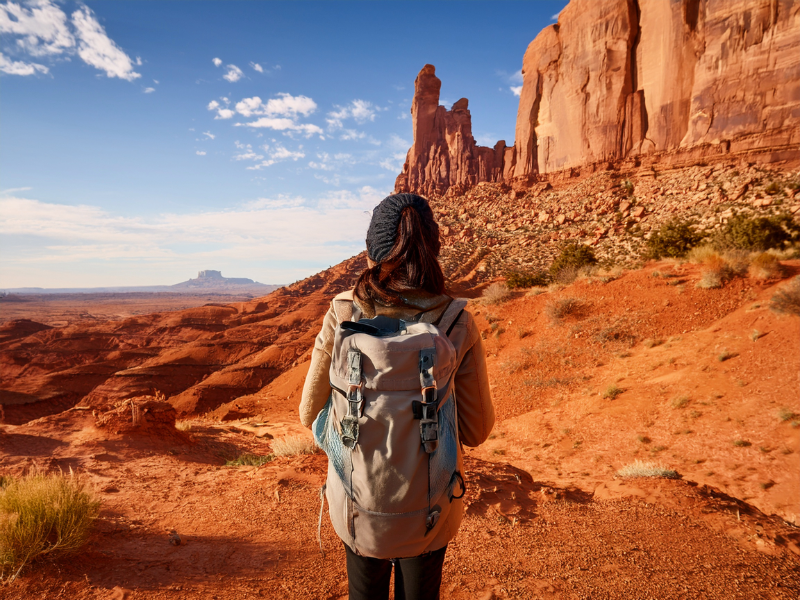
Getting ready for a day hike can feel overwhelming if you’re just starting out—or even if you've been doing it for a while. There’s something about being out in nature that makes you want to be both prepared and free. After years of hitting trails, making mistakes, and slowly fine-tuning what comes with me, I’ve narrowed down the gear I consider essential. Here's a list of the hiking gear I always bring with me on a day hike, with some honest thoughts, practical advice, and some products if you're looking to upgrade your setup.

1. A Reliable Backpack for Your Hiking Gear
Let’s start with the one thing that carries everything else. A good backpack is the foundation of any successful hike. I used to think any old bag would do, but after one too many sore backs and sweaty shoulders, I started paying attention to what makes a real difference.
Look for one with padded straps, breathable back support, and adjustable chest and waist belts—these little features matter a lot more after a couple of miles. For day hikes, something in the 15-25 liter range is usually ideal. Bonus points if it has hidden compartments for your valuables and loops to hang your water bottle or trekking poles. Water-resistant material is a must—getting caught in a surprise rainstorm taught me that the hard way.
Colorado is known to be sunny most of the year, but one time a massive storm started in the middle of my hike and I had to run for cover. Needless to say, everything was soaked inside. Since switching to this water-resistant backpack, I’ve never had to deal with soggy snacks again.
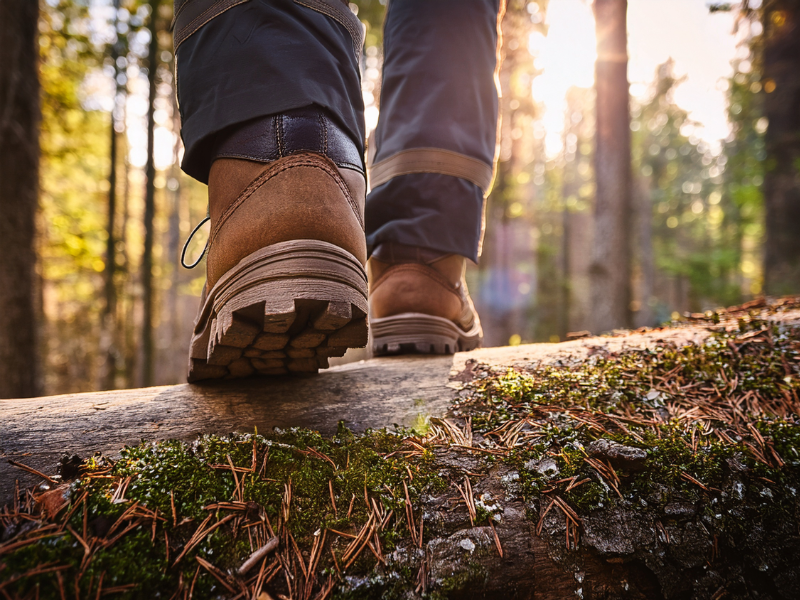
2. Proper Footwear
If I had a dollar for every time I heard someone say, “These shoes should be fine,” and then ended up with blisters or rolled ankles…
Your footwear can make or break your hiking experience. I learned this the hard way on my first hike. It was a hot day, the stone was slick, and my soles had zero grip. I slipped halfway down a scramble and had to limp back to the trailhead. Lesson learned.
When choosing hiking shoes or boots, consider the type of trails you usually walk: are they rocky, muddy, steep, or flat? For rough terrain or longer hikes, go for boots with ankle support and solid grip. If you're more into quick, light hikes, trail runners or hiking shoes with breathable mesh might be better. Either way, look for something waterproof or at least water-resistant, and break them in before your first hike! Also, don’t underestimate the power of good hiking socks—merino wool has been a game-changer for me.
I love using these hiking shoes! I love them so much that after my first pair broke after a couple years and multiple hikes, I bought the same pair again. My feet feel comfortable, the have amazing grip and they are a great price.

3. Hydration System (Two Options)
I always say this: the trail will humble you if you don’t hydrate. Whether it's a short walk or a full-day hike, water is non-negotiable. I used to carry a plastic bottle, but once I switched to a hydration bladder, I never looked back. It’s just easier to sip while you walk without having to stop and rummage through your bag.
Hydration bladders like this one usually fit right into your backpack and come with a hose that clips to your strap. Super handy.
If that’s not your style, go for an insulated stainless steel water bottle like this one . It keeps your water cold all day and doesn’t leak. When choosing a bottle, look for something lightweight, BPA-free, and easy to clean. A wide mouth is helpful for filling it up quickly at trailheads or adding ice.
Also, if you're hiking in areas where water sources are available, a portable water filter is a lifesaver. We always carry this filter just in case we run out or need to refill mid-hike—especially on hotter days.
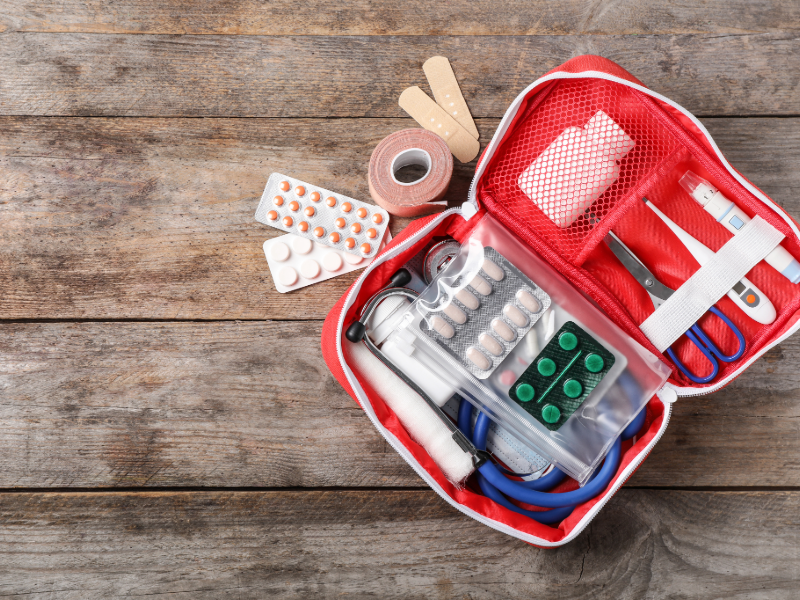
4. First Aid Kit
A first aid kit might not be the most exciting piece of gear, but you’ll be glad you have it when you need it. I’ve used mine for everything from minor scrapes and twisted ankles to unexpected bee stings.
You don’t need a full survival kit, but make sure yours includes: adhesive bandages, antiseptic wipes, tweezers, gauze, medical tape, ibuprofen, antihistamines, and blister pads. It’s also smart to include a small roll of athletic tape—it’s incredibly versatile for sprains, hot spots, or even repairing gear in a pinch.
The compact version of this kit fits easily in my side pocket and has everything I need.
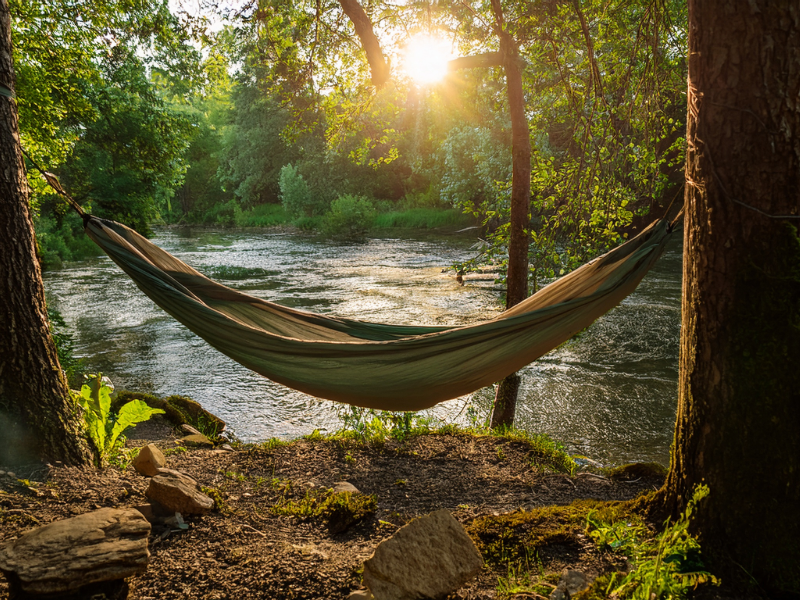
5. Hammock
There’s something magical about resting in a hammock after a long hike, especially if you find the perfect shaded spot with a view. I didn’t used to carry one, thinking it was too bulky, but there are now ultralight, compact hammocks that easily fit into any backpack.
Look for a hammock made from durable, breathable material (nylon is a favorite) that packs down small. Make sure it comes with strong straps and carabiners for quick setup—you don’t want to be fumbling with knots when you’re ready to relax.
We always bring this lightweight hammock and set it up whenever we stop for lunch or just want to take a break and breathe in the view.

6. Lightweight Snacks
Hiking works up an appetite, and there's nothing worse than being hangry halfway up the trail. We always pack a mix of protein and carbs to keep us fueled—things like trail mix, granola bars, beef jerky, and dried fruit.
Look for snacks that won’t melt, crumble, or go bad quickly. If it’s a longer hike, we might even pack a peanut butter sandwich or a tortilla wrap with something hearty inside. Just remember to pack out all your trash and food wrappers—leave no trace!
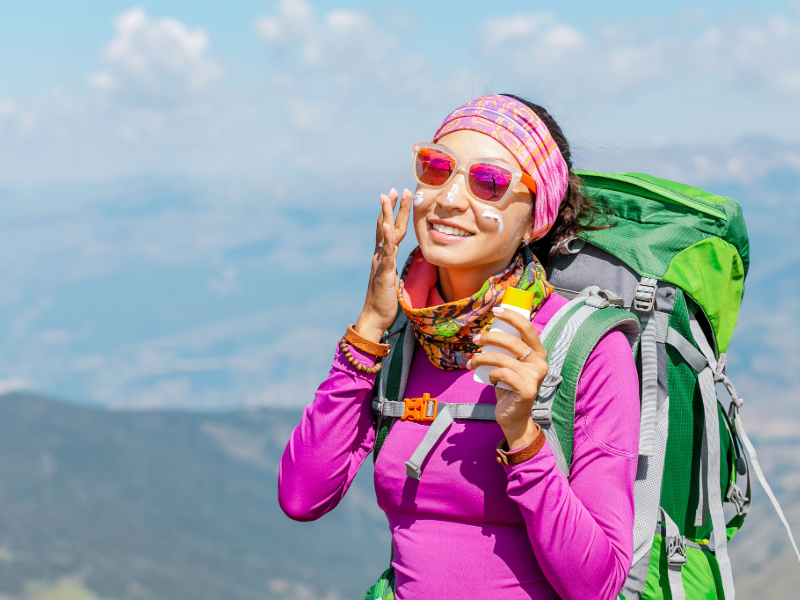
7. Sun Protection (Sunglasses + Sunscreen)
Sun exposure can sneak up on you, especially during longer hikes or at higher altitudes. I used to underestimate how strong the sun could be—even on overcast days—and paid for it with sunburn and tired, dry eyes.
Always pack high-SPF sunscreen and reapply during your hike, especially if you're sweating or near water. Sunglasses with UV protection are a must, too. I recommend going for lightweight, wrap-around styles that stay in place even on bumpy trails. Bonus if they’re polarized to reduce glare—like these shades, which I now take on every trip.
These are my personal trail essentials, the items I always reach for no matter the distance or location. It took me a while (and a few painful blisters) to figure out what really works, but now I can hike confidently knowing I’ve got what I need.
If you’re gearing up for your own outdoor adventures, I’ve linked some of my favorite tried-and-true gear above (affiliate links). These are all products I’ve either used myself or come highly recommended by other hikers I trust.
Looking for more hiking advice? Check out these helpful guides:
The Best Tent for Every Adventure: Pros & Cons by Purpose – A breakdown of the best tent styles for solo trips, group treks, and different climates.
Ultimate Hiking Trip Planning: Your Step-by-Step Guide – From choosing your trail to packing and prep, this post walks you through every stage of planning a hiking trip.
Happy hiking, and see you on the trail!
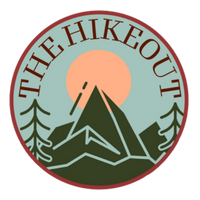



Comments